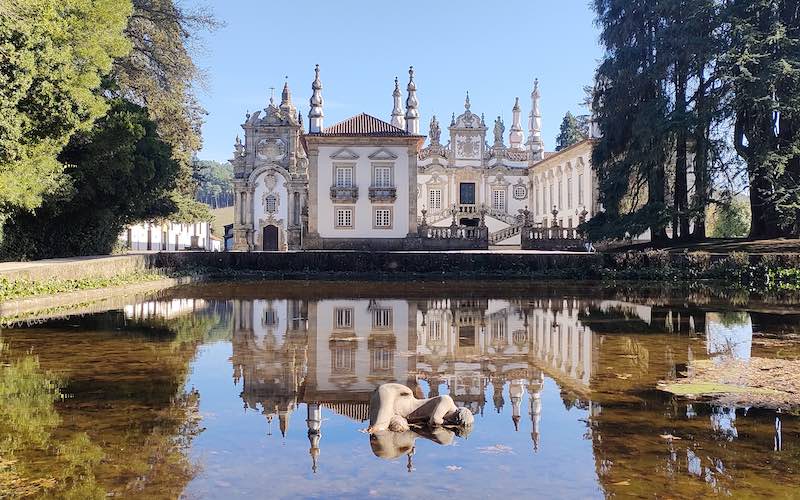Deep in the Douro valley region and hidden away off the usual tourist trail, is the Portuguese city of Vila Real. It is home to the beautiful ‘Casa de Mateus’ – one of the most lavish manor houses in Europe. You might recognise it from the label of the Mateus wine bottle! This stunning 18th Century Palace is one of Portugal’s finest examples of Baroque architecture. It was built at the same time as Mafra Palace, when the elite families in Portugal were inspired to follow suit of the King. Casa de Mateus was turned into a museum after ‘Fundação da Casa de Mateus’ was founded (1970) and the house was opened to the public. Visitors can see the house, chapel, gardens and winery. The house runs regular tours for visitors on the hour every hour, between 11-4pm (with the exception of some Holy days or festivals).
A note about visiting the Museum – sorry to disappoint you, but the usual tours do not include wine tasting for the Mateus rose….if you really want this, you have to arrange it separately or buy it from the souvenir shop opposite! The usual visits are more to do with the house than the wine!
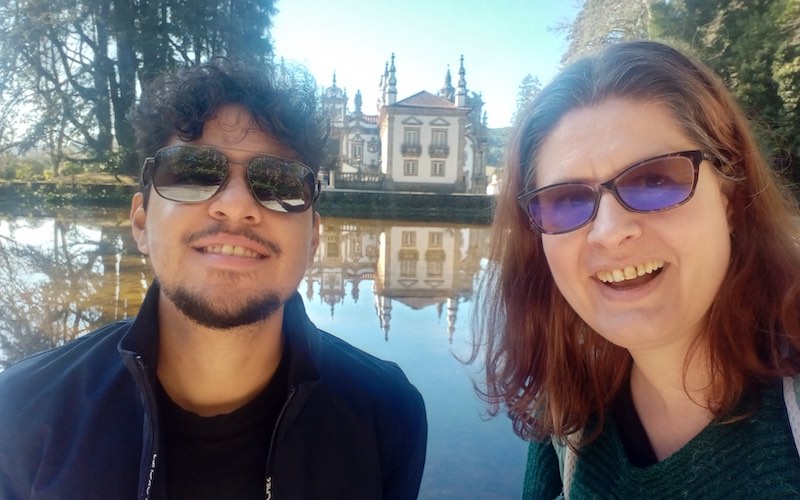
How to get to Casa de Mateus
Casa Mateus is not right by a train station (the nearest station is Regua), but you can take the Flixbus to Vila Real, and then get an Uber from Vila real Rodoviario (bus station) to Casa de Mateus (it cost us just €6 at the time of writing November 2023). Mateus Palace is just 4km outside of the centre of Vila Real. Flixbus operates to Vila Real from Porto, Lisbon, Braganca and Viseu.
It’s not necessary to book in advance in low season, you can turn up and pay for your ticket. It costs 15€ for adults in including a guided tour of the house and there is a discounted rate of 11€ for students who are 25 and under. Remember that at busy times, it might be better to book in advance – you can email them here: visitas@casademateus.pt. You should expect to spend one hour to 90 minutes exploring Casa de Mateus.
I would recommend going to Casa Mateus for a morning tour (aim for around 11am) and then you can eat lunch in Vila Real and explore some of Vila Real’s landmarks and Churches before heading back to your hotel.
History of Casa de Mateus
Casa de Mateus was completed in 1744. It was initiated by António José Botelho Mourão, the 3rd Morgado de Mateus, who appointed Nicolau Nasoni to design the building (an Italian architect working on commission). It is designed with two levels – downstairs was the kitchens/servants quarters and upstairs was reserved for the aristocrat residents. Actually, the servants were not even allowed through the baroque staircase!
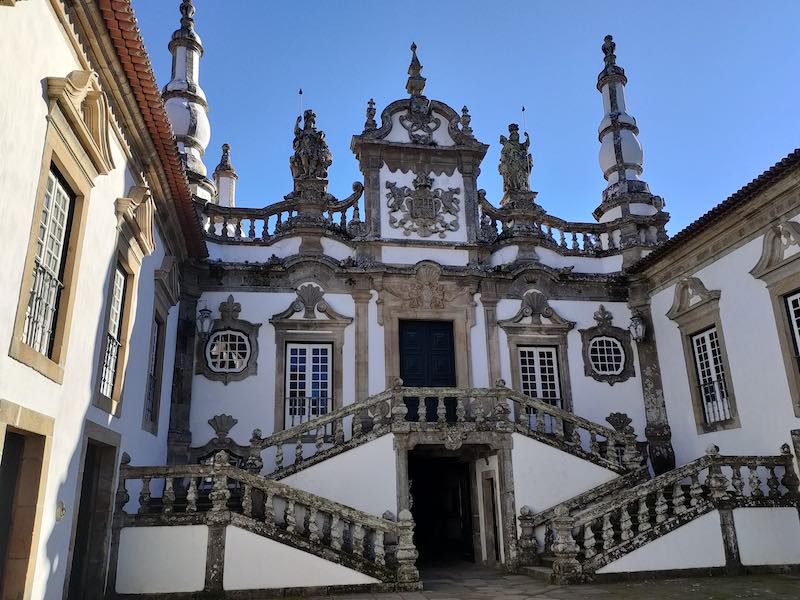
Casa de Mateus was built at a time when elitist families in Portugal followed in the footsteps of King João V, who was constructing Mafra Palace in the Baroque style. The very first custodian of the estate was a lady called Donna Maria, who married a high court judge. They were the ones to determine rules and succession to the following generations in 19th century.
In 1863, they divided the land amongst the families. Casa de Mateus was the main house in the area – it was the centre of all the states. If you imagine a web, this was right in the middle of it, and it was inherited by the descendants of Lady Donna Maria – passed down through generations.
So, where did their money come from? There was a very important social income from common people – they would rent out the land for agriculture, and from all the products that were produced, a certain percentage would be given to them to the family who owned the manor.
Because they had this freedom from the need to be earning a living, the families of the manor were always always involved in diplomacy and writing statements of the economies. Although now, of course, the politics has changed in society, they still archive important documents here at the house. The house is still in the hands of that same family and the present generation is now the 17th.
Vestibule or Entrance Hall
The first room that you come to is the vestibule or entrance hall – a very grand room, as it is the first internal impression guests would have of the estate. You will see a grand tapestry, with two Lions on the coat of arms that represent protection. The vestibule or Grand hall provides access to the Library (to the North) and the Social wing (to the South).
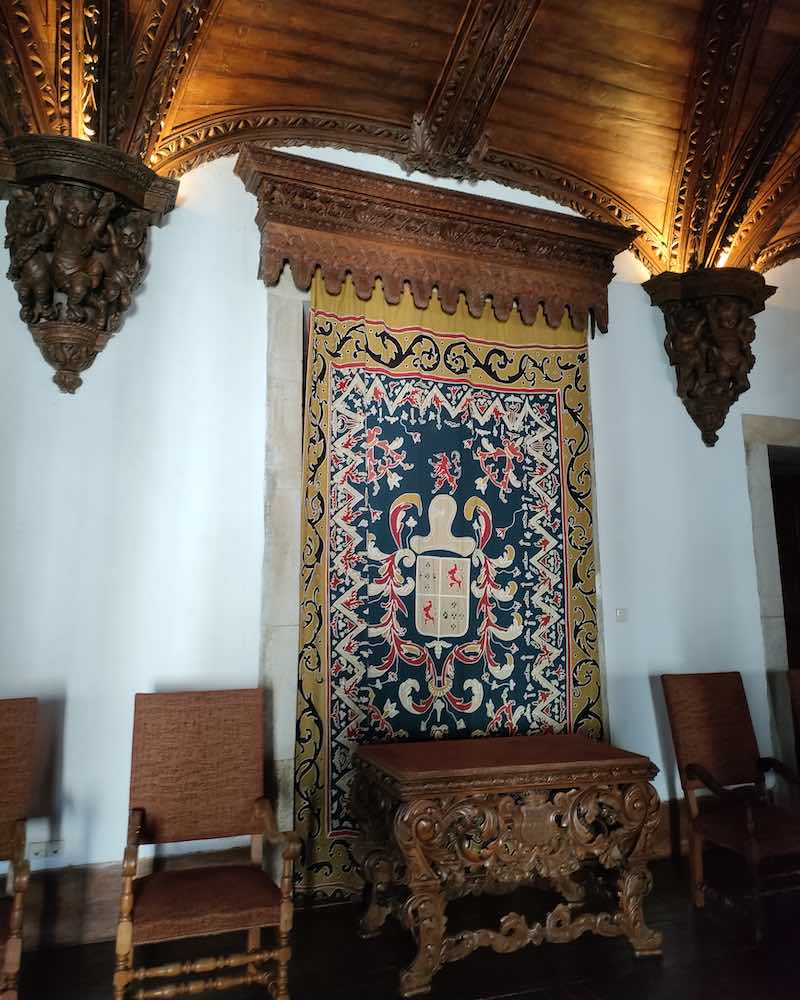
Casa de Mateus Library
The next room that you are shown (to the left or the North) is a grand library. They say that it’s history dates back to the time of the ‘Despotic enlightenment’ of Marques de Pombal. Marques de Pombal was the person (or arguably group of people) who rebuilt Lisbon following the great earthquake of 1755. The era of Marques de Pombal was almost a dictatorship – he ruled with an iron fist and was responsible for the abolishment of slavery in continental Portugal and for end of the Portuguese inquisition (intended to keep Christianity ‘pure’ but resulted in persecution).
During this era, the Jesuits were accused of plotting against the King, and the Jesuits were tortured and killed by the Pombals. Voltaire wrote about this episode of persecution, and there are many elements of this time period evident in the Casa de Mateus library.
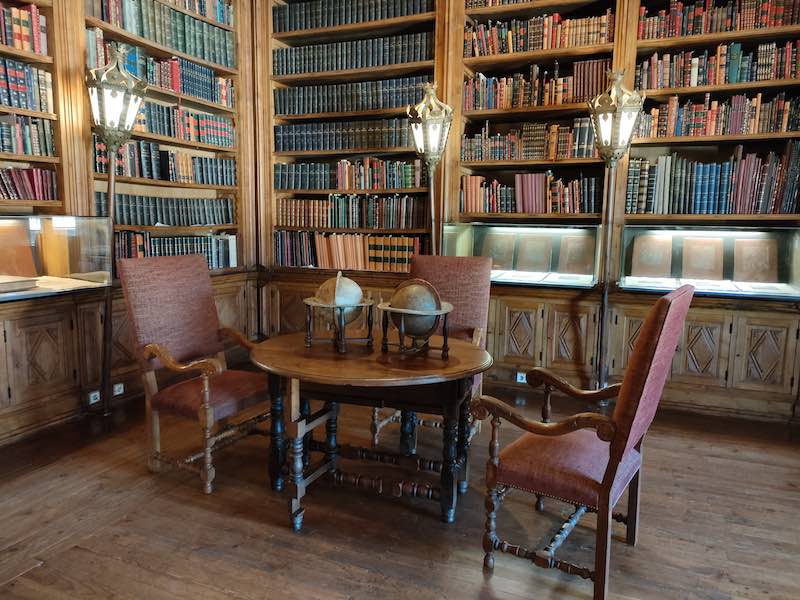
The library itself contains approximately 600,000 books, many are religious texts and history books that were mainly used by the clergy. The books were catalogued, along with numerous documents found at Casa de Mateus. In 1970, descendants of the original family created a private law foundation. They also turned house into a public museum and started working on cultural events.
Important Historical Documents (kept private in the basement)
One of the most important parts of the house are the historical documents – the first one dates from 1572. Almost 900,000 were re-organised and archived. The documents that were found here are taken to the ground floor where they are analysed by historians who reconstruct the history. This section is not open to the general public, access to this area is by pre-arrangement only and limited to historians and journalists.
Casa de Mateus Bedrooms
Next, you will get to see the bedrooms, still set up as they would have been originally, with the 18th Century furniture still in place.
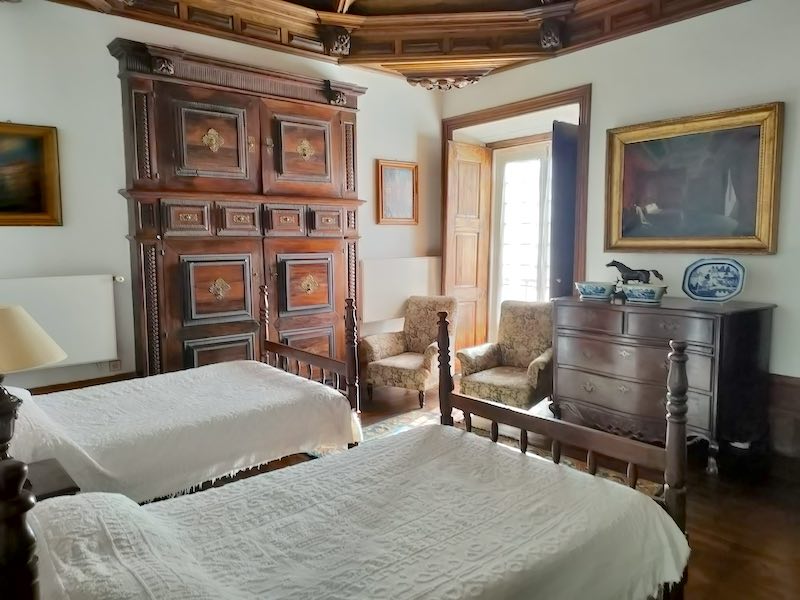
Many items of Baroque furniture are beautifully carved from wood and contain elements of symbolism. For example, angels are a symbol of enlightenment and the Owl is a symbol of wisdom.
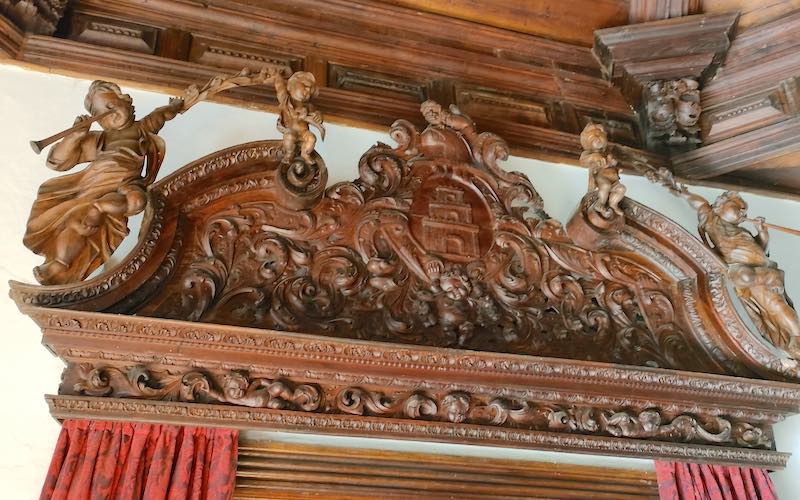
Religion Museum
At this time in history, wealthy families often had their own chapels, and Casa de Mateus was no different. In fact, the families who lived here would allow locals to participate in their service. They were genuine Christian believers, but also, as you can imagine, it gave status if you had your own Church or chapel.
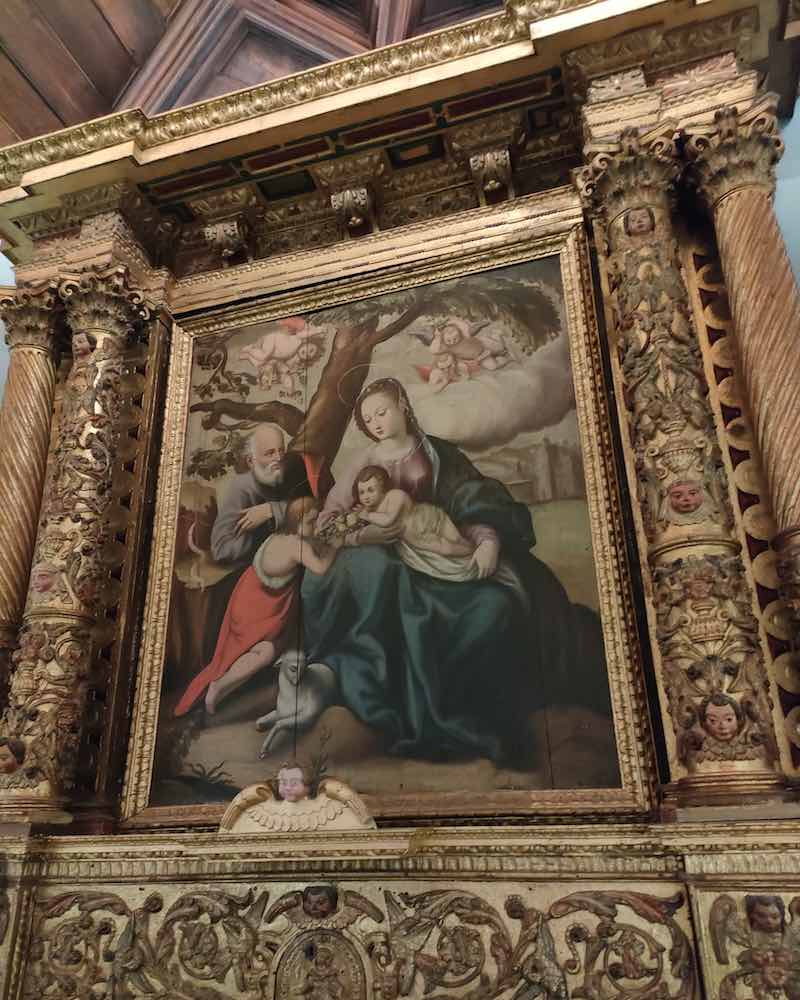
The Religion Museum at Casa de Mateus contains vestments embroidered in thread of Gold and altar pieces, all done by hand for the inauguration of the chapel. This chapel is actually still used and recently when there was a funeral held here.
In another room in the Religion Museum, you can see several ‘Machineta baroque’ – these were essentially ‘dioramas’ designed to tell the stories of the new testament to people who were illiterate.
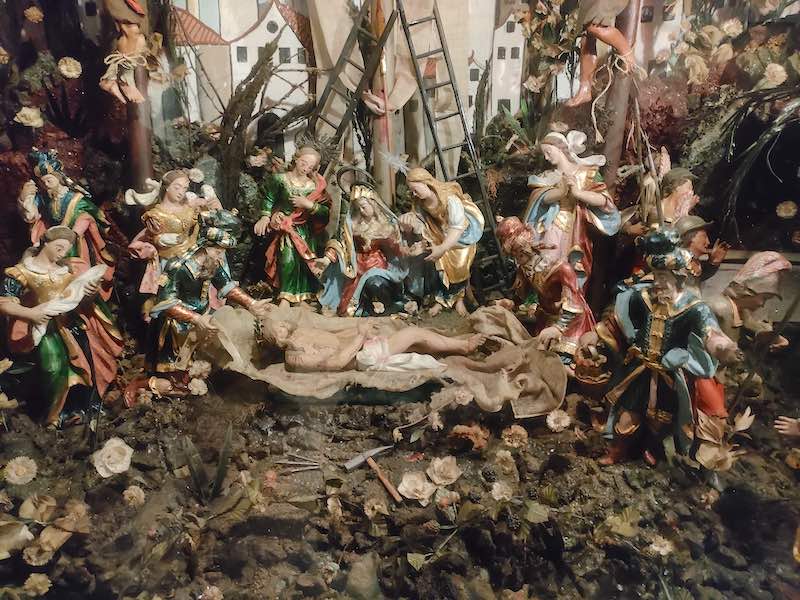
Casa de Mateus Gardens and Vinyards
After your guided tour inside the house, walk through to the back where you will find some beautifully landscaped gardens. You can also walk into the Quinta to see the vinyards. Remember not touch or eat the grapes unless you have a guide to advise you and give you permission to do so! If you want to buy some of the wine, there is a souvenir shop opposite Casa de Mateus, which has an abundance of local produce including massive bottles of the Mateus wine!
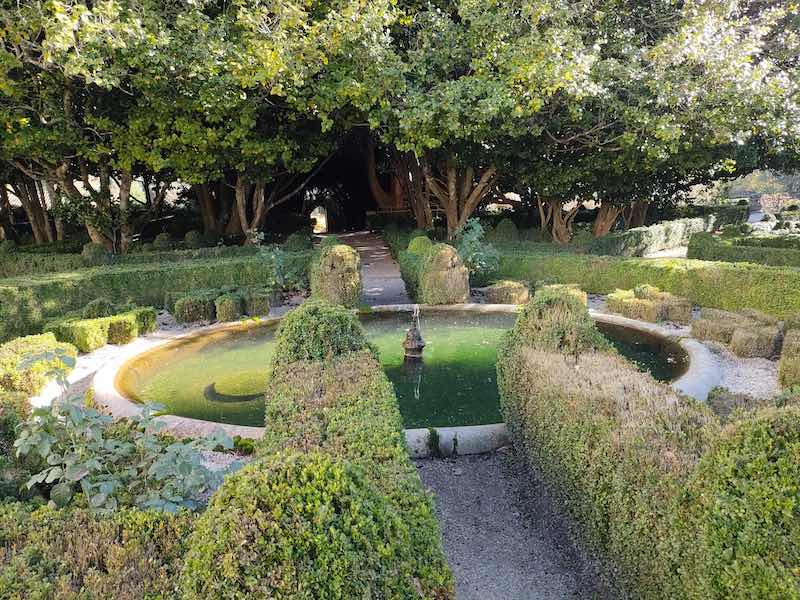
Casa de Mateus Igreja
At the front of Casa de Mateus, there is a beautiful Church on the left hand side. It was closed when we visited, but it is worth asking if you can go in. Sometimes the doors are locked, but the guides do have keys. If you like this style of Church architecture, you should also see Igreja Sao Pedro in Vila Real.
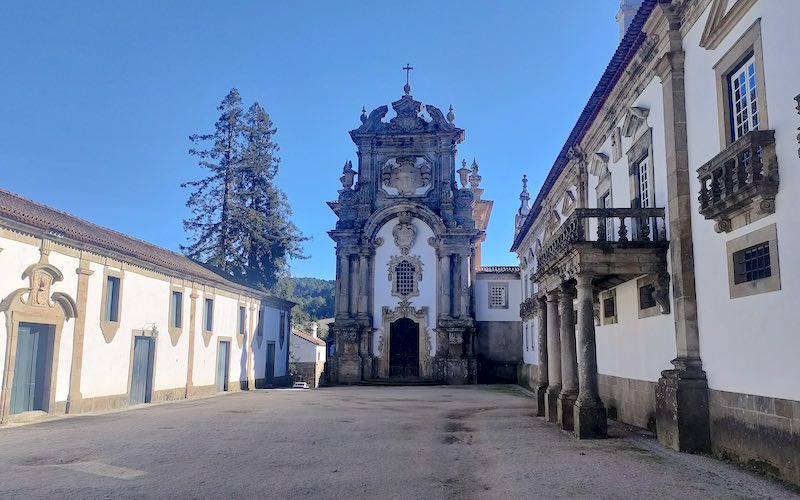
After Casa de Mateus – Take some time to explore Vila Real
After you have visited Casa de Mateus (which should only take a morning), then I would recommend that you head into the centre of Vila Real. Grab an Uber to ‘Igreja Sao Pedro’ and spend at least an hour walking round the centre of Vila Real. You can go inside these gorgeous Churches for free…
- Igreja da Misericórdia – A Romanesque style 16th Century Church with a beautiful interior. It was commissioned by the Abbot of Mouçós, Pedro de Castro.
- Igreja Sao Pedro – This is my favourite Church in Vila Real because of its beautiful Azulejos (blue Portuguese tiles) inside and the beautiful design of the facade. It was also constructed by Pedro de Castro, and his tomb can be found inside.
- The Cathedral of Vila Real (Church of St. Dominic or Igreja de São Domingos) – the Roman Catholic cathedral in Vila Real, which has been the seat of the Diocese of Vila Real since 1924.
If you’re looking for somewhere good for lunch in Vila Real, I would recommend Cardoso for traditional Portuguese food, or Forneria for a good pizza!
If you have time to spend in the area, the two other great cities that you can get to easily for a day trip from Vila Real are Lamego and Amarante. Here are some article to inspire you to visit these places…
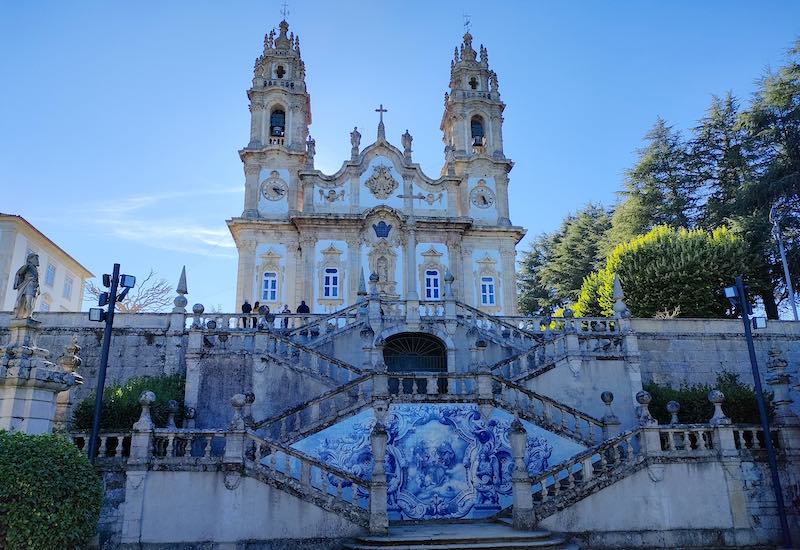
Further Reading on Portugal
I hope that you enjoyed my article on Casa de Mateus. Portugal is one of my favourite places to travel, and it’s extremely safe for solo female travellers too. If you are interested in reading more about travel in Portugal then here are some more of my blog articles that I recommend for you…
- Highlights of Portugal
- Things to do in Braganca, Portugal
- Monsanto – The most Portuguese village in Portugal!
- Guarda Portugal travel Guide
- Is Aveiro worth visiting? The Venice of Portugal
- Castelo Branco – The Ultimate Travel Guide
- How to spend 4 days in Lisbon

